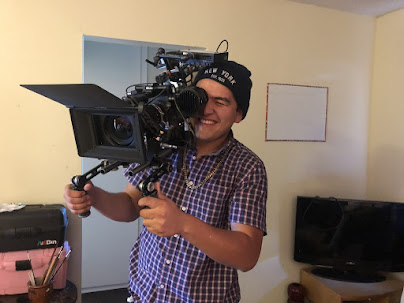OMO Blog Task
1) What year was the advert produced?
In the 1950s.
2) How were women represented in most adverts in the 1950s?
Women were represented as inferior to men since they need them to do everything and are seen as a mother or housewife since they have to stay home and look after the kids or do housework.
3) How does the heading message ('OMO makes whites bright') and typography promote the product?
The typography is sans serif so it makes the product look new and fresh so people will buy it. Women want clothes to be clean so the heading message is a key way to promote the product.
4) Analyse the mise-en-scene in the advert (CLAMPS): how is costume, make-up and placement of the model used to suggest women's role in society?
The costume and make up makes women think they have a look a particular way while doing their job at home. The model is the advert looks happy which shows that women are supposed to be grateful and happy while looking after the kids etc.
5) Why is a picture of the product added to the bottom right of the advert?
So the picture of the product sticks in your head and the next time you see it in a shop you will instantly recognise it.
6) What are the connotations of the chosen colours in this advert?
The colours scheme is red,white and blue which can connotate the flag of United Kingdom which shows us this advert is based in the United Kingdom.
7) How does the anchorage text use persuasive language to encourage the audience to buy the product? Give examples.
The anchorage text is written in a funny and kinda annoying way by mentions the words "brightness" and "whiteness" again and again. This sticks in the audience's head and is a way to promote their product.
8) What representation of women can be found in this OMO advert? Make specific reference to the advert and discuss stereotypes.
The representation is that women are supposed to stay and home and do housework since in the advert we see a women hanging up clothes and smiling towards the camera. She is wearing a lot of make up which goes with the stereotype women are supposed to look pretty while doing housework.
9) What is the preferred reading for this advert - what did the producers of the advert want the audience to think in 1955?
The preferred reading is for the advert to engage the audience and get them to buy the product since in advert it states "Today, millions of women" which tells the audience everyone uses OMO so they should get it too. This is called the bandwagon technique which is very effective because it catches people of guard and intrigued into buying that particular product.
10) What is the oppositional reading for this advert - how might a modern audience respond to this text and the representation of women here? The oppositonal reading is that the advert is sexist and may offend women because it implies stereotypes and nowadays women can do jobs that men can do but stereotypes are not all gone. This is because there are still adverts that want women to look a particular way and are sexulaised. For the example, this sterotype is used in the "Are you beach body ready?" advert.

Comments
Post a Comment